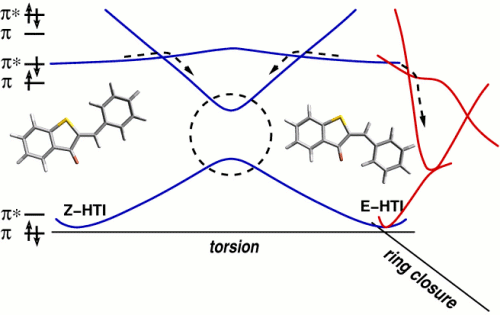Molecular Driving Forces for Z/E Isomerization Mediated by Heteroatoms: The Example Hemithioindigo
18-Feb-2011
J. Phys. Chem., 2010, 114, 13016-13030 published on 02.12.2010
J. Phys. Chem.
A combined experimental and theoretical investigation of photoinduced Z/E isomerizations is presented. Unsubstituted Hemithioindigo is selected as a representative minimal model to unravel the reaction mechanism in the presence of heteroatoms on an atomic level. Time-resolved spectroscopy reveals multiexponential reaction dynamics on the few picoseconds time scale, which are interpreted by quantum chemical calculations at the CASSCF/CASPT2 level of theory. Detailed insight into the processes governing the ultrafast decay from the first excited state, mediated by a number of conical intersections, is provided. Charge separation and charge balance recovery on the reaction pathway play the leading role and are controlled by the electron-donating or -withdrawing character of the heteroatoms. The electronic and geometric structures of the individual minimum energy conical intersections governing the reaction are rationalized, and an extended energetically low lying conical intersection seam is extracted. Comparison to the experimental results permits linking the observed time constants to molecular intermediates and pathways. An explanation is provided for the pronounced differences of Z → E and the E → Z photoreactions upon excitation to the first excited singlet state.



